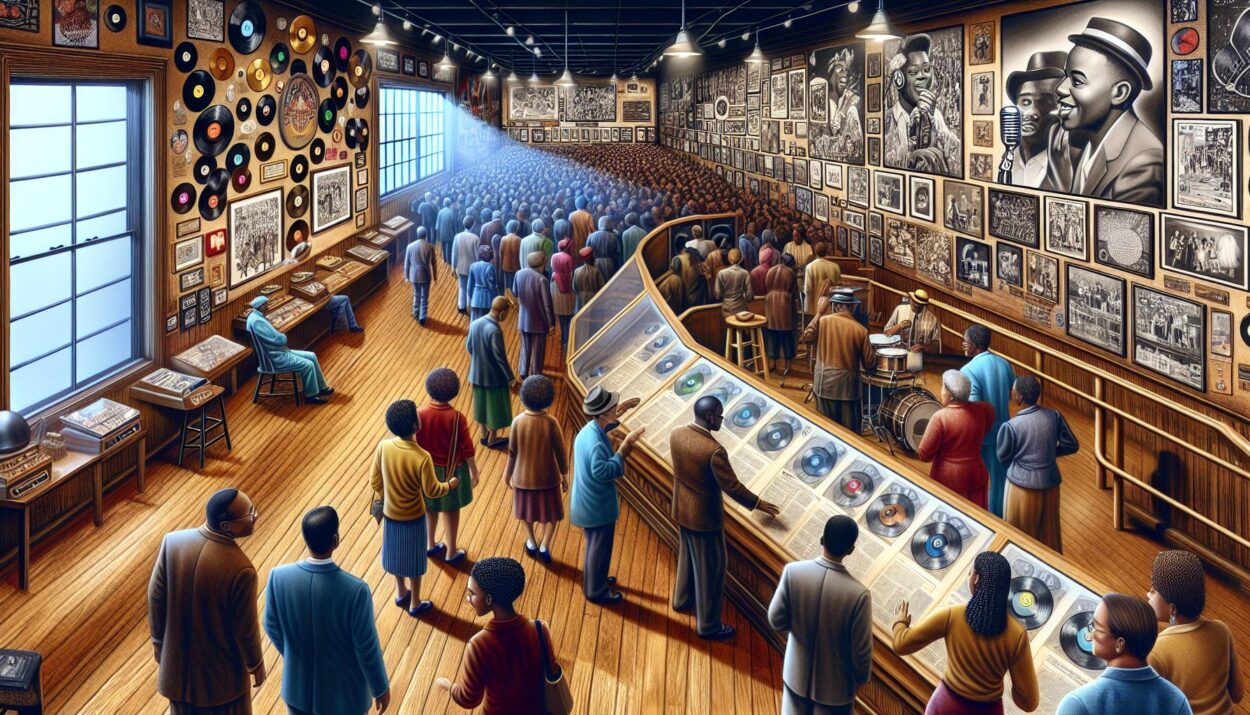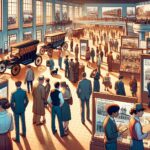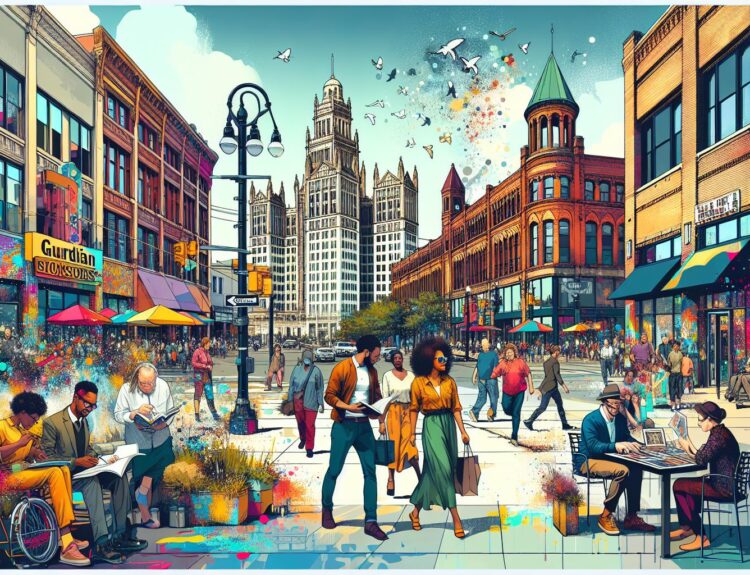Detroit’s not just the Motor City; it’s a treasure trove of history waiting to be explored. From the roaring engines of innovation to the whispers of the past that echo through its streets, there’s so much more to this city than meets the eye. I’ve always been fascinated by the rich tapestry of stories that make up Detroit’s history, and I’m thrilled to share some of its most iconic landmarks with you.
Whether you’re a history buff, an architecture enthusiast, or simply looking for a unique travel experience, Detroit’s historical landmarks offer something for everyone. I’ve wandered through these sites myself, feeling the weight of history with every step. Join me as we take a journey through time, exploring the landmarks that tell the story of Detroit’s glorious past.
The Henry Ford Museum
Stepping into the Henry Ford Museum was like walking through a time portal for me. The sprawling complex, located in Dearborn just outside Detroit, isn’t just a museum; it’s a celebration of American innovation and spirit. The museum is named after Henry Ford, a man whose vision reshaped America, but it goes well beyond his story alone. It houses an impressive collection that encapsulates the Industrial Revolution to present-day advancements.
One of the most striking things I noticed was the museum’s ability to showcase both the grand inventions and the everyday life artifacts side by side. From towering locomotives to the chair in which Abraham Lincoln was sitting when he was assassinated, each exhibit tells a part of the American story. The museum doesn’t just display items; it presents narratives that are as diverse as America itself.
For car enthusiasts like me, the museum is a slice of heaven. Here, I found the evolution of automobiles, from Ford’s first vehicle, the Quadricycle, to the sleek lines of modern electric cars. It’s fascinating to see how transportation has evolved over the decades and how it has shaped society.
But the Henry Ford Museum isn’t all about mechanical wonders. I was equally captivated by the displays that focus on the social movements and changes in American life. The museum dedicates sections to moments and movements that have defined the nation, from the struggle for civil rights to the advancement of women’s suffrage. This breadth of history, technology, and culture ensures that there’s something intriguing for every visitor.
One exhibit that particularly resonated with me was the Rosa Parks bus. Being able to sit in the very seat where Rosa Parks took a stand by remaining seated was a profoundly moving experience. It’s moments like these that underscore the museum’s power to connect us with our past in a deeply personal way.
As I moved from one exhibit to another, I couldn’t help but marvel at the richness of the stories being told. The museum does an excellent job of integrating interactive elements, making it an engaging experience for visitors of all ages. Whether it was participating in a factory assembly line simulation or marveling at historical aircraft, I was continually impressed by how the museum brought history to life.
Guardian Building
When I first laid eyes on the Guardian Building, it was like stepping into a portal that took me straight into the 1920s. Located in the heart of Detroit, this skyscraper isn’t just an office building; it’s a monument to Art Deco design and one of Detroit’s most iconic historical landmarks. Known affectionately as the “Cathedral of Finance,” its unique style and grandeur set it apart from the city’s more conventional architecture.
The exterior of the Guardian Building is a marvel in itself, with a brick facade that seems to change color under the Michigan sun, ranging from deep oranges to warm reds. But it’s the interior where the real magic happens. As soon as I stepped inside, I was greeted by an explosion of vibrant colors, intricate designs, and lavish materials. The lobby is adorned with Pewabic and Rookwood tile, setting the stage for an awe-inspiring experience. Its three-story vaulted ceiling, decorated with mural frescoes, and the sparkling chandeliers made from Monel metal invite you to explore further.
One of the most captivating aspects of the Guardian Building is its blend of Native American, Aztec, and Arts and Crafts influences, which are woven together to create a tapestry of cultural homage. This blend is not something you’d expect to find in a skyscraper in the Midwest, making it all the more special.
During my visit, I learned about the Guardian Building’s history and its role in Detroit’s development. Constructed in 1929, it served not only as a bank but also as a beacon of prosperity during a time when the city was booming with industrial growth. The Guardian has housed numerous businesses over the years, ranging from financial institutions to architectural firms, reflecting its adaptability and enduring significance in Detroit’s landscape.
For tourists interested in architecture or history, or even just looking for some beautiful pictures, the Guardian Building offers something truly unique. Its fusion of artistic styles, combined with its historical relevance, provides a fascinating glimpse into Detroit’s past. I couldn’t help but feel a deep appreciation for the craftsmanship and vision that went into creating such a masterpiece.
While walking through the grand corridors, passing by the detailed ironwork and under the glow of custom lighting fixtures, it’s hard not to be overwhelmed by the beauty and history encapsulated within these walls.
Detroit Institute of Arts
Continuing our journey through Detroit’s historical landmarks, I can’t help but highlight the Detroit Institute of Arts (DIA). Nestled in the heart of the city, the DIA is not just a museum; it’s a sprawling cultural haven that spans 658,000 square feet and houses over 65,000 works of art. From ancient artifacts to contemporary masterpieces, the museum’s collection is both vast and diverse, making it one of the top art museums in the United States.
What truly sets the DIA apart is its commitment to accessibility. I’ve always appreciated how the museum goes above and beyond to make art accessible to everyone. Whether you’re an art critic or someone who can’t tell a Monet from a Manet, the DIA has something for you. Their community outreach programs and educational initiatives ensure that the beauty and history encapsulated within their walls are shared far and wide.
One of the museum’s most notable features is the Detroit Industry Murals, painted by the renowned Mexican artist Diego Rivera. These murals, considered among Rivera’s most significant works, are a powerful tribute to the city’s manufacturing legacy and labor force. Each time I visit, I find myself mesmerized by the intricate details and the story they tell of Detroit’s industrial age. It’s a vivid reminder of the city’s resilience and ingenuity.
As if the inside wasn’t enough, the museum’s exterior is equally captivating. The Beaux-Arts building, designed by Paul Philippe Cret, stands as a testament to the city’s architectural evolution and provides a stunning backdrop for those all-important travel photos. I often take a moment just to admire the building’s facade before diving into the art inside.
For families traveling with kids, the DIA is a treasure trove of educational and interactive experiences. The museum frequently hosts family-friendly events and art-making workshops that allow children to engage with art in a fun and meaningful way. It’s heartwarming to see the next generation of art lovers being nurtured in such a dynamic environment.
The museum’s café is a delight as well, offering a range of culinary treats that mirror the diversity of the art on display. After hours of exploring, there’s nothing better than relaxing with a coffee and reflecting on the myriad of artworks that have made an impression on me.
Motown Museum
When I set out to explore Detroit’s historical landmarks, the Motown Museum was high on my list. Nestled in the heart of the city, this museum, also known as “Hitsville U.S.A.”, grabbed my attention for its legendary status in the music world. It’s where the Motown sound was born, a sound that changed the landscape of American music forever.
Walking into the museum, I was immediately transported back to a time when artists like Stevie Wonder, Diana Ross, and The Temptations walked these halls. The museum is housed in the original recording studio and headquarters of the Motown record company, making the experience all the more authentic. Every corner of the place felt like it was humming with the echoes of the past.
The Exhibits tell a fascinating story, not just about the music, but about the era it was born into. The civil rights movement and the cultural shifts of the 60s are woven into the narrative, showing how Motown was more than just a music genre; it was a significant cultural force. Exhibits display a vast array of memorabilia—gold records, costumes worn by artists, and even some of the original instruments. It’s a tactile experience, offering a glimpse into the soul of an era that shaped modern music.
One of the highlights of my visit was the Guided Tour, led by knowledgeable and passionate guides who shared little-known stories of the artists and the music that came out of Motown. Standing in Studio A, where all the magic happened, was a surreal experience. The guide played some classic tracks, and I couldn’t help but imagine the likes of Marvin Gaye or Smokey Robinson recording in that very room.
The museum also does an impressive job of celebrating the ongoing legacy of Motown. Through various programs and events, they ensure that the spirit of Motown not only remains alive but continues to inspire future generations. It’s a reminder of how influential and enduring the Motown sound is.
For any music lover, or anyone interested in American history for that matter, the Motown Museum is a must-visit. It offers a rare look into a musical revolution that echoed beyond its time, and walking through its doors feels like stepping into a living piece of history. It’s not just about the past; it’s about the impact and the ongoing story of how Detroit shaped the sound of a nation.
Conclusion
Exploring Detroit’s historical landmarks, especially the Motown Museum, has been an eye-opening journey for me. It’s not just about the music; it’s a deep dive into a cultural movement that shaped a generation. Walking through the same rooms where icons like Stevie Wonder and Diana Ross created their magic was nothing short of inspiring. It’s clear that Detroit’s rich history and its contributions to music and culture are treasures worth preserving. For anyone looking to experience the soul of a city that danced to its own beat and played a pivotal role in music history, these landmarks are a must-visit. I’m leaving with a profound appreciation for the Motown sound and its impact, reminded that history is not just about the past—it’s a living, breathing part of our present.






